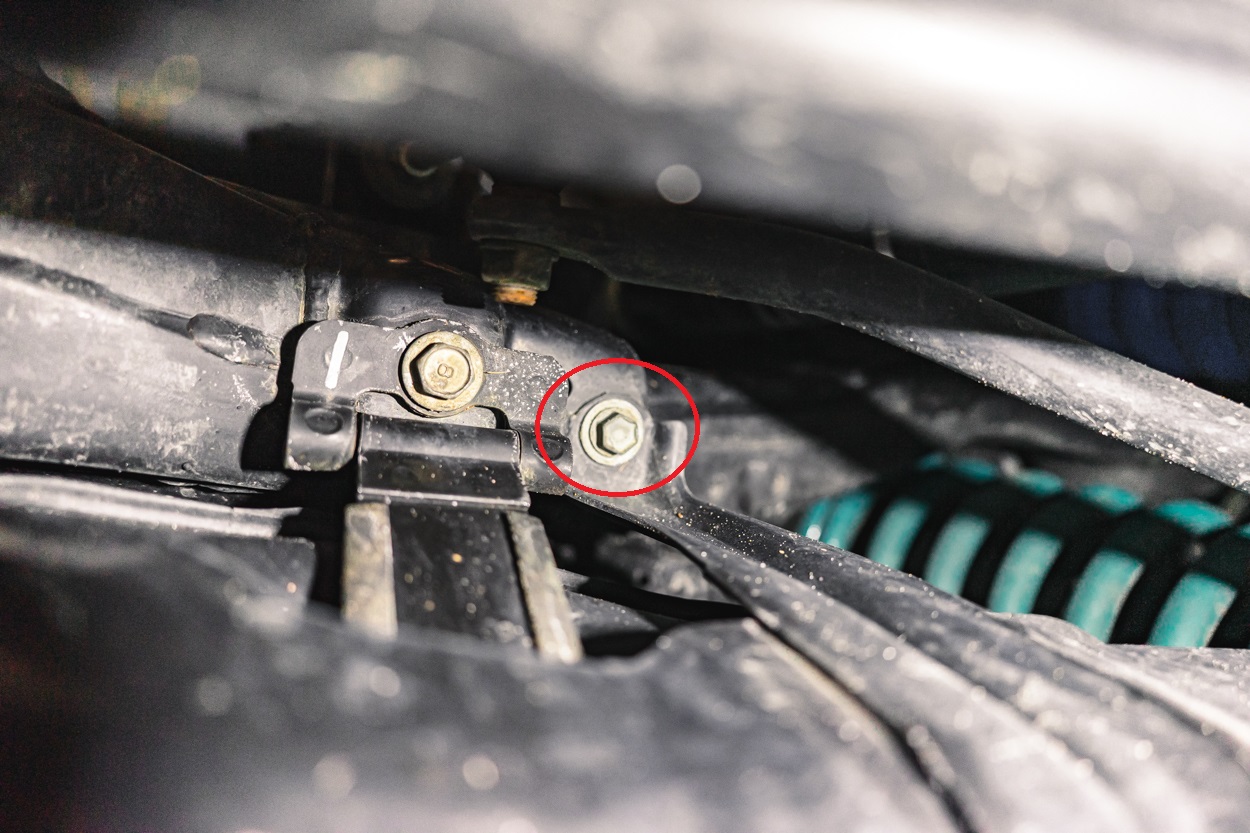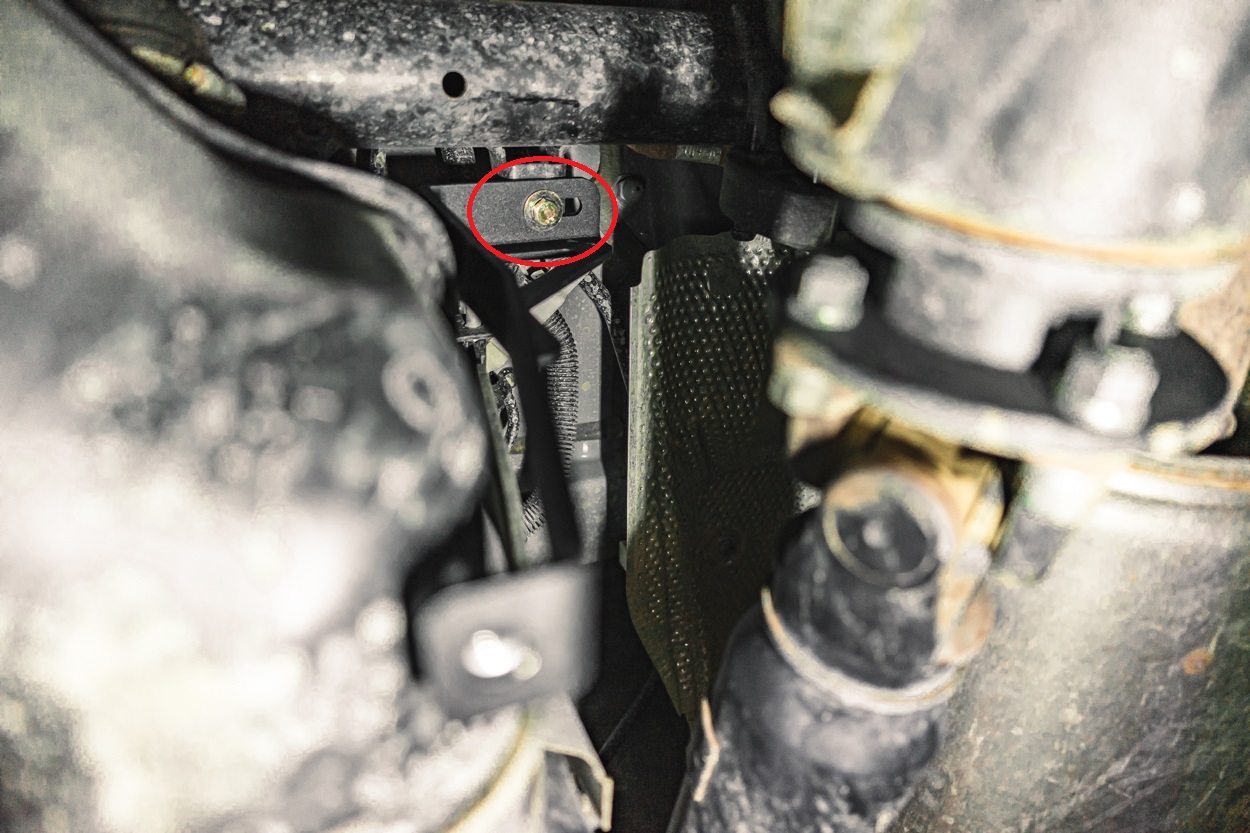
A gas tank skid and what it protects is self-explanatory. The factory one is made of thin, stamped 1/8″ sheet metal that provides adequate protection against small branches and the like. If you frequently subject your rig to boulders or large ruts, however, you may want to consider something more robust. Even with aluminum being a softer metal than steel, the Cali Raised LED 1/4″ steel or aluminum gas tank skid provides better protection than the factory one.
From an aesthetic standpoint, I like the clean lines of this gas tank skid. It flows seamlessly with the transfer case skid plate that sits just a few inches in front. I also really like that the skid plate and attachment brackets are separate. This is extremely helpful if you need to lower your gas tank skid for any reason, as you’ll see in the factory skid plate removal steps below.
Weight
- Steel: 37.9lbs
- Aluminum: 16lbs
Find It Online:
- Cali Raised LED Gas Tank Skid Plate (aluminum or steel): Check Price
Table Of Contents
Installation

Tools Needed
- 12mm & 13mm socket
- 12mm & 13mm wrench
- 3/16 Allen-key
Recommended Tools
- 12mm & 13mm Pivoting & ratcheting wrenches
- 10″ Socket extension
- Breaker bar
- Floor jack
I highly suggest getting the recommended tools listed above; they will make the installation infinitely easier. For the skid plate straps, set aside the three factory bolts as they’ll be reused.
Install Video
Step 1. Remove Factory Gas Tank Skid Plate

The first bolt to remove is located on the inside front strap. Locate the strap and follow it up to the bolt. Space here is tight, and you’ll need to reach up and over the driveshaft with a 12mm wrench. A pivoting, ratcheting wrench makes this much easier.

The second bolt is located at the inside rear strap above the driveshaft. This bolt is pretty high up. I recommend using a breaker bar with a 10″ extension and a 12mm socket to easily break it loose. Alternatively, you can stick your arm all the way up there with a regular 12mm socket.

There is a third bolt located on the outside, near the rear sway bar link. You do not want to remove the one on the tank strap. Instead, you want to remove the one behind it, towards the rear coil.

Finally, there are three bolts on the outside, driver’s side of the frame. These bolts will not be reused.
Step 2. Install Cali Raised LED Gas Tank Skid Plate Brackets

There are three brackets in total. The relative positions of these brackets are pictured above on the undercarriage.

For the rear outside mount, there is a bracket with an M fastener that will mount on the inside of the skid. Use a factory bolt to install the top of the bracket into the body.

The rear inside mounting bracket will install with the larger half to the body and the smaller half to the top of the skid plate.

The final mount will be installed with the 90-degree portion at the bottom and the sloping portion at the top, pointing towards you.
Step 3. Install Cali Raised LED Gas Tank Skid Plate

Note: A second set of hands or a floor jack is recommended for an easier installation.
First, loosely install the three supplied 13mm bolts on the frame.

Next, install the three provided 3/16 Allen-head bolts through the skid plate into the brackets. You should be able to see the bracket threads through the skid plate holes.
Step 4. Finalize Skid Plate Position

Once the gas tank skid plate is in position, tighten all six mounting bolts. Also, tighten the three smaller bolts that attach the mounting brackets to the skid plate if you haven’t already done so.
Final Thoughts

I think an aftermarket gas tank skid is crucial if you plan to do any moderate to difficult off-roading. Or, if you want the peace of mind that comes with more robust protection. Protecting your gas tank is just as important as the other underside because if you puncture it, you won’t be getting very far.
I like that the Cali Raised LED gas tank skid has plenty of drainage holes so that water can’t pool up. That’s a very likely situation living in the rainy PNW.
Installation was pretty quick and simple, but I’d like to reiterate how much a floor jack will help, especially if you’re installing it solo. The fit and finish are top-notch, so be sure to take a look at this skid if you’re in the market for one.

I was looking at this skid plate, it looks good but I’m not sure about all those holes. I understand your point about draining but I think they will also “catch” on rocks a lot. I think a mostly smooth surface is better for a skid so that you can “slide” over obstacles.
What’s your experience with this so far?
Sorry for the late response – I was recently high-centered in some deep snow and sitting on all of the skid plates, I didn’t seem to have any issues. I share similar concerns though regarding whether these holes will catch on obstacles. FWIW, the skid plate rests right up against the gas tank, so I don’t think there’s a large enough gap for anything to really get stuck in the holes. I think this plate is better suited for the moderate off-roader and not hardcore rock crawlers.